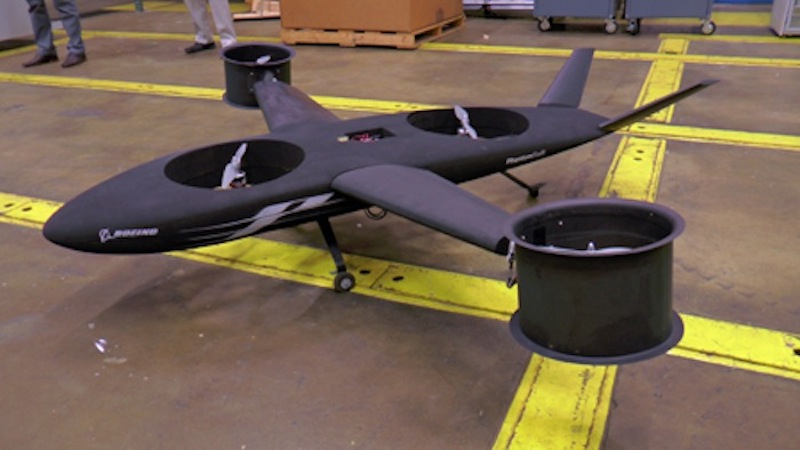Boeing Going Vertical with 'Phantom Swift' Military X-Plane (Video)

Aerospace giant Boeing is designing a new type of aircraft capable of taking off, hovering and landing vertically, the company says. Such vehicles are essentially hybrids of helicopters and fixed-wing airplanes, and could one day be used by the military to transport troops, weapons or cargo to and from the battlefield.
Boeing was one of four companies recently selected to receive funding from the Defense Advanced Research Projects Agency (DARPA) — the arm of the U.S. Department of Defense charged with developing new technologies for the military — to design new, unmanned vertical takeoff and landing (VTOL) aircraft. Boeing will receive $17 million as part of the agreement, which is part of DARPA's VTOL Experimental Plane, or X-Plane, program.
Engineers have struggled to radically improve the performance of vertical takeoff and landing aircraft, particularly with attempts to upgrade the vehicles' vertical flight and cruising capabilities, DARPA officials have said. [See video of Boeing's Phantom Swift aircraft]
Boeing's prototype aircraft, known as Phantom Swift, has two large fans inside the fuselage that provide vertical lift, and smaller fans on the vehicle's wingtips that generate additional lift and keep the aircraft in control when it hovers in place.
"Designing an aircraft to perform a vertical takeoff, while maintaining adequate low-speed control, is challenging," Dan Newman, one of the leaders on the Boeing Phantom Works Advanced Vertical Lift team, said in a statement. "Sustaining efficient hover is also difficult, and adding a high cruising speed is even more challenging."
Boeing is aiming to develop an aircraft that can achieve a top speed of up to 460 miles per hour (740 kilometers per hour), without sacrificing the ability to hover efficiently.
"Proving these capabilities in a single aircraft has been the holy grail for tactical military aviation," Newman said. "We're confident that Phantom Swift could be the solution."
Sign up for the Live Science daily newsletter now
Get the world’s most fascinating discoveries delivered straight to your inbox.
Last year, Boeing engineers built a sub-scale prototype of the Phantom Swift, using 3D printing to quickly design, build and fly early models of the aircraft.
The current designs are unmanned vehicles, but DARPA wants to eventually have manned aircraft, agency officials have said.
In late 2015, the four selected companies — Boeing, Aurora Flight Sciences Corp., Karem Aircraft Inc., and Sikorsky Aircraft Corp. — will be required to submit preliminary designs of their vehicles to DARPA. The agency will then review the submissions and choose one to build as a working prototype.
The first VTOL test flights are scheduled for 2017 or 2018, according to DARPA officials.
Follow Denise Chow on Twitter @denisechow. Follow Live Science @livescience, Facebook & Google+. Original article on Live Science.

Denise Chow was the assistant managing editor at Live Science before moving to NBC News as a science reporter, where she focuses on general science and climate change. Before joining the Live Science team in 2013, she spent two years as a staff writer for Space.com, writing about rocket launches and covering NASA's final three space shuttle missions. A Canadian transplant, Denise has a bachelor's degree from the University of Toronto, and a master's degree in journalism from New York University.









